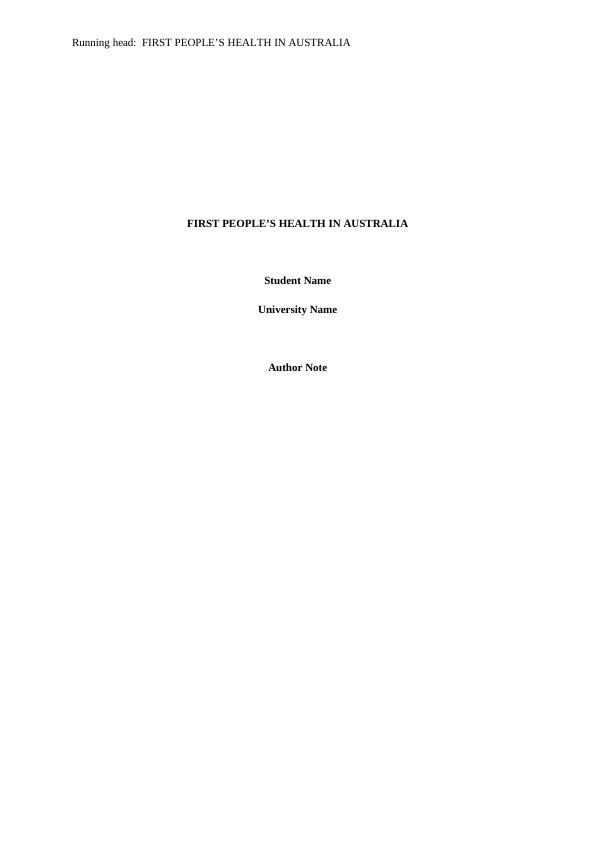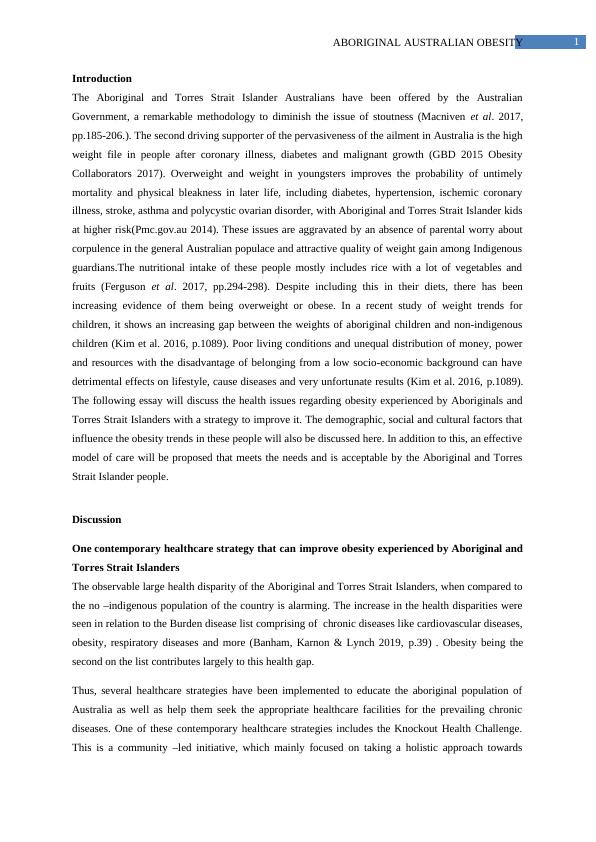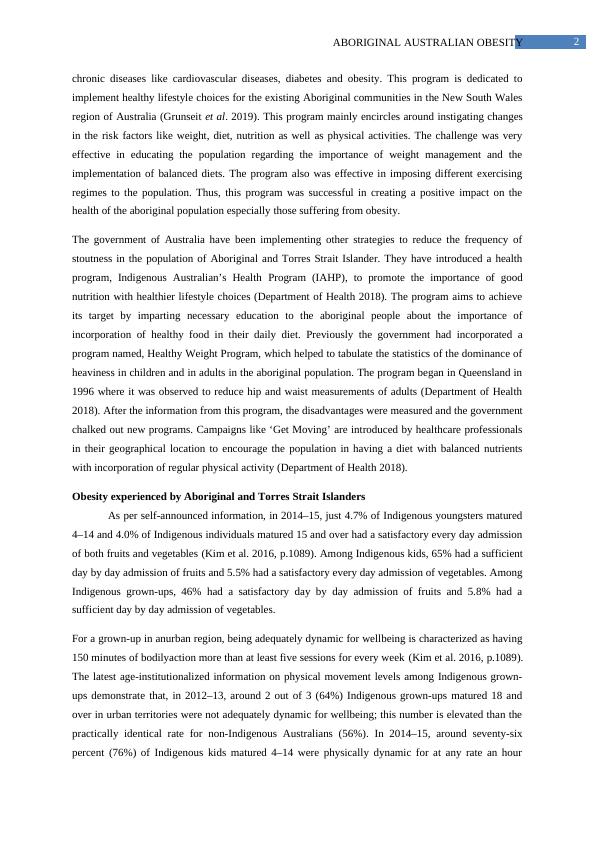First People Health in Australia Assignment 2022
Write an academic essay on how a contemporary healthcare strategy can improve a health issue experienced by Aboriginal and Torres Strait Islander peoples, with a focus on reducing obesity. The essay should include key demographic, social, or cultural factors that impact upon this health issue and discuss a health perspective, effective program, model of care or practice(s) that meets the needs and is more acceptable to Aboriginal and Torres Strait Islander people.
Added on 2022-10-11
First People Health in Australia Assignment 2022
Write an academic essay on how a contemporary healthcare strategy can improve a health issue experienced by Aboriginal and Torres Strait Islander peoples, with a focus on reducing obesity. The essay should include key demographic, social, or cultural factors that impact upon this health issue and discuss a health perspective, effective program, model of care or practice(s) that meets the needs and is more acceptable to Aboriginal and Torres Strait Islander people.
Added on 2022-10-11
End of preview
Want to access all the pages? Upload your documents or become a member.



